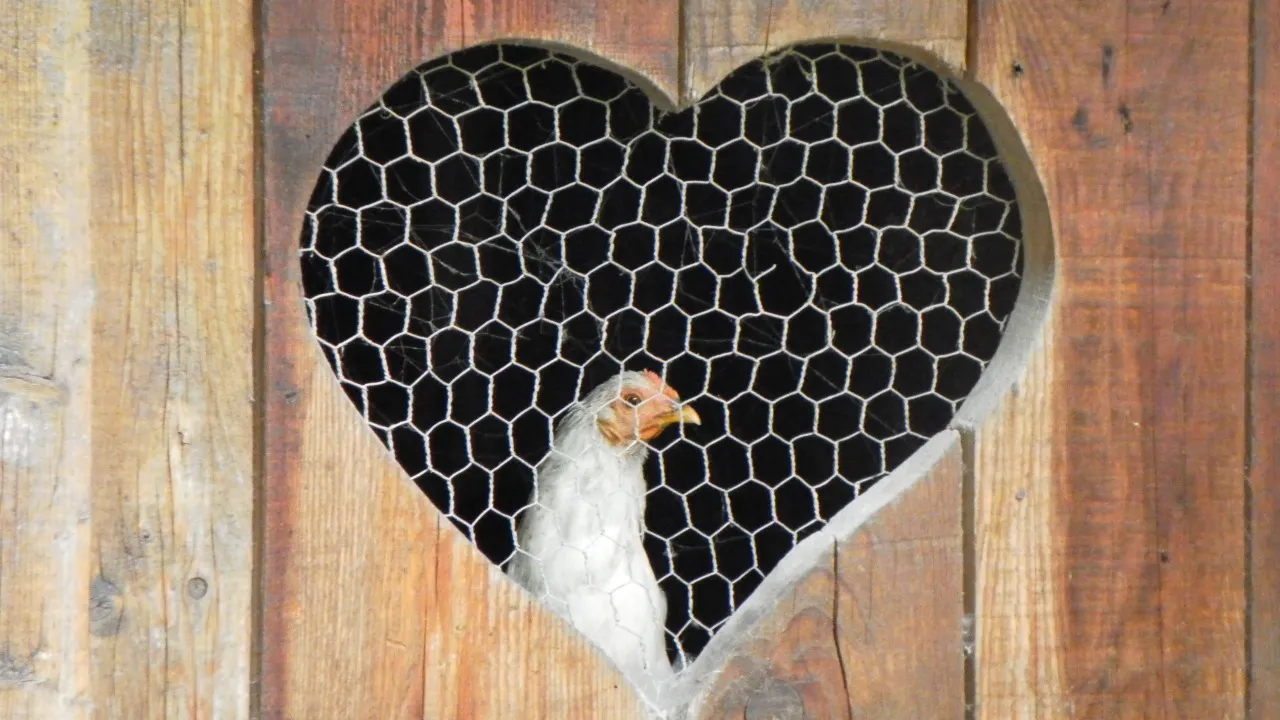
chicken from Gosol, Spain. Our first volunteer project
I would like to say something about myself, by saying about my life aim, which I'm dreaming about since 2018 - creating in the future eco-village, called Cumelen.
WHAT IS CUMELEN?
Cumelen is the word from Mapuzungun (the language of Mapuche - people who were living before in the lands we are going to settle in). It means "thing which is good/to feel good".
Cumelen is some multi-faceted project of self-sufficient permaculture farm with zero carbon emissions
By using modern technology, the experience we gained on the farms in multiple countries and, above all, traditional rules of permaculture, we wish to create a shelter for ten adults and another ten kids/teenagers.
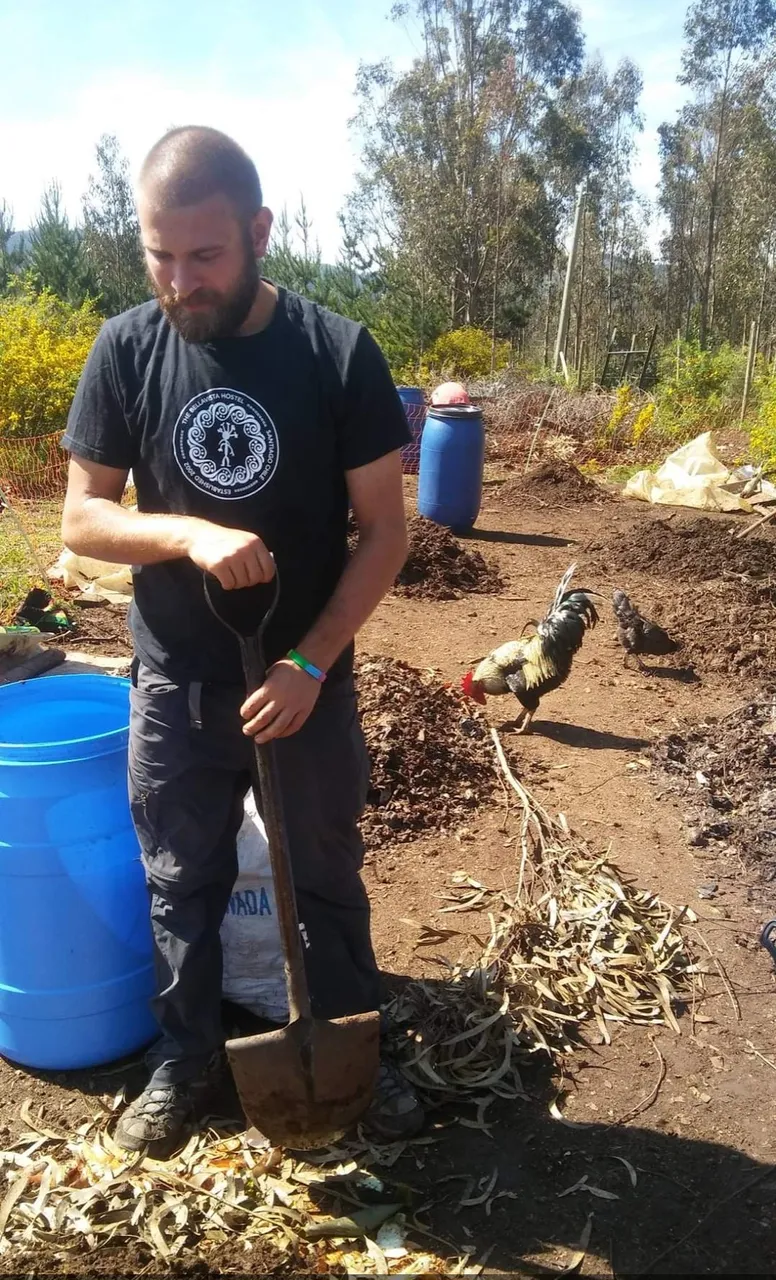
Preparing the compost - Chile, Curanipe
This place will not be focused on maximizing the income, so won't be similar to typical, productive monoculture farms. I want to focus on biodiversity, re-cultivation of the soil, avoiding pesticides and artificial fertilizers, even if it will mean that the harvest will be lower. Protecting nature is the priority.
To achieve that aim, I prepared some guides with clues on how to grow plants and protect them from parasites and fungus. I focused on 50 kinds of vegetables, 25 kinds of fruits and nuts, multiple kinds of herbs, edible flowers, wheat, mushrooms but also I figured out how to breed poultry, fish, sheep, and bees in the most eco-friendly way.
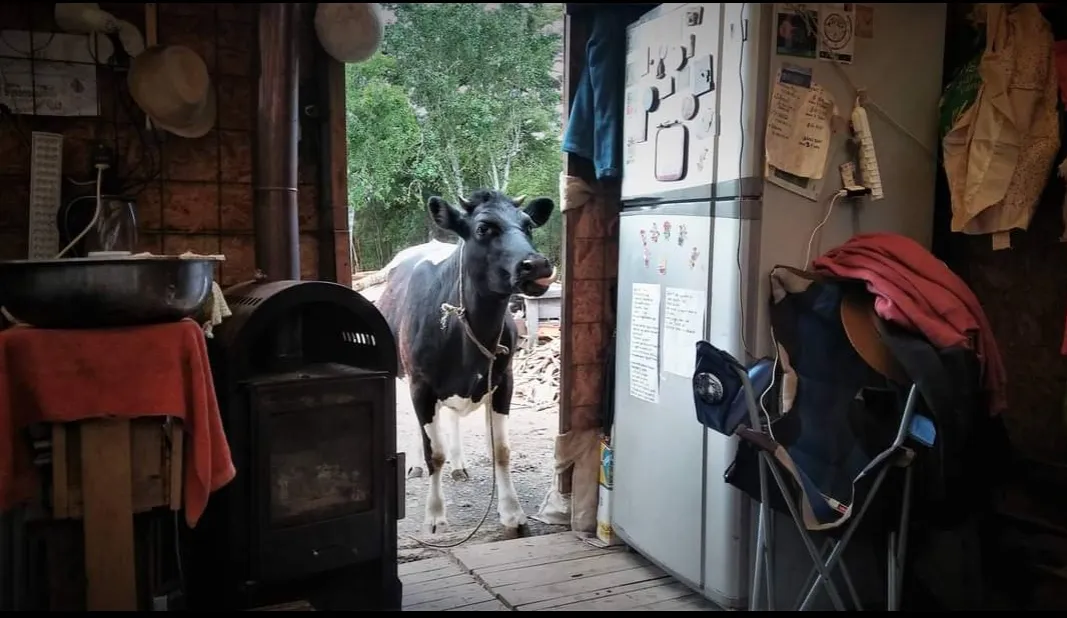
unexpected guests - Osorno, Chile
My plan includes building an experimental glasshouse with tropical edible plants, as some variety in a diet and insurance for the future (long term prognosis says that the place where we are going to buy some land will change the climate from CFB oceanic to CFA humid subtropical until 2070 - Koppen climate classification )
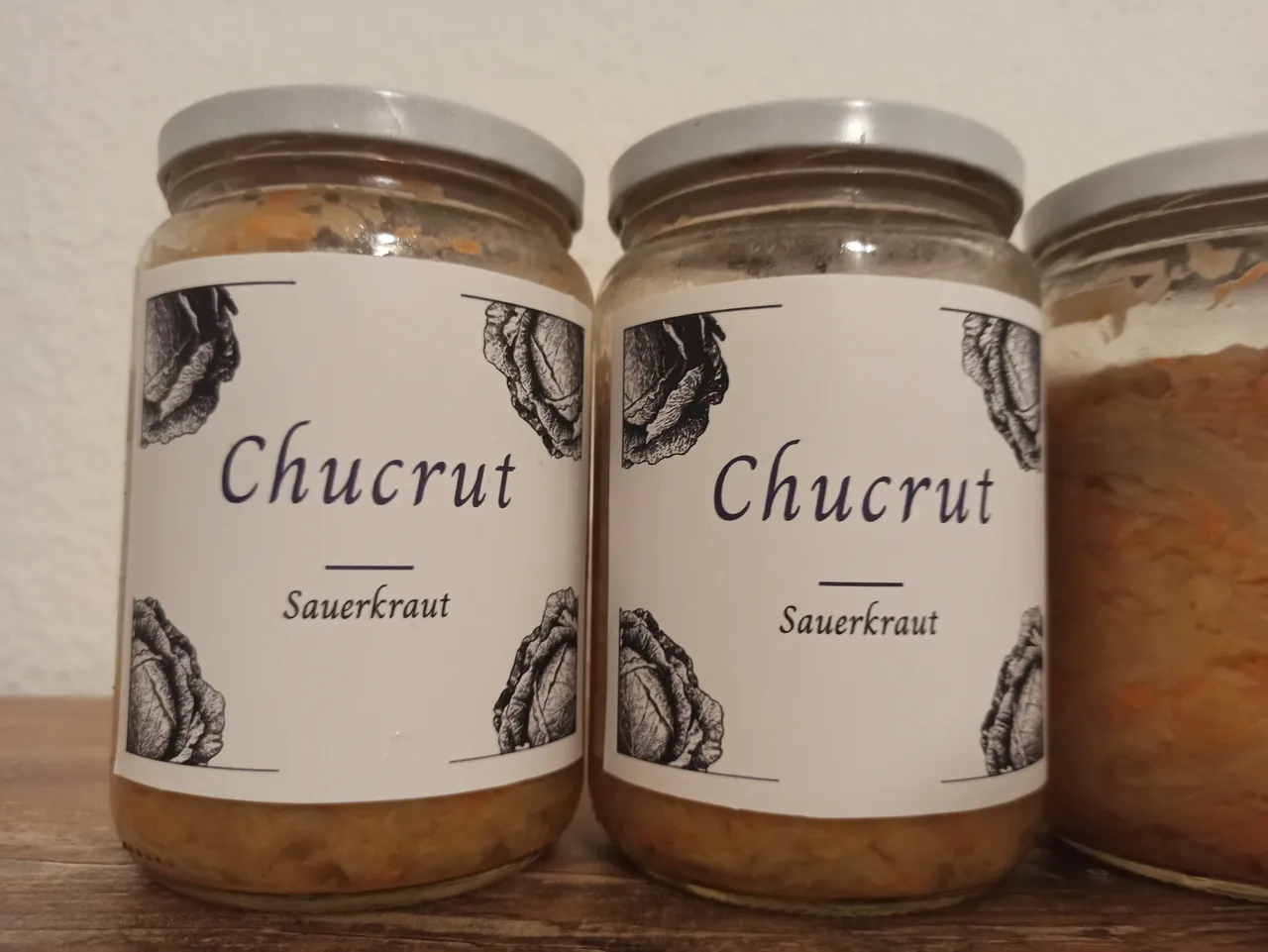
how to make sauerkraut - Rosario, Argentina
I am going to collect my own seeds, focusing mostly on old kinds of plants, which are getting forgotten because of the new, genetically modified plants with patents (most of the fruits and vegetables you buy in the shop are patented. Farmer can buy the seeds to grow the plants, but receiving own seeds from them is prohibited by law. That way each year farmers are forced to pay the big companies for the right to grow the food).
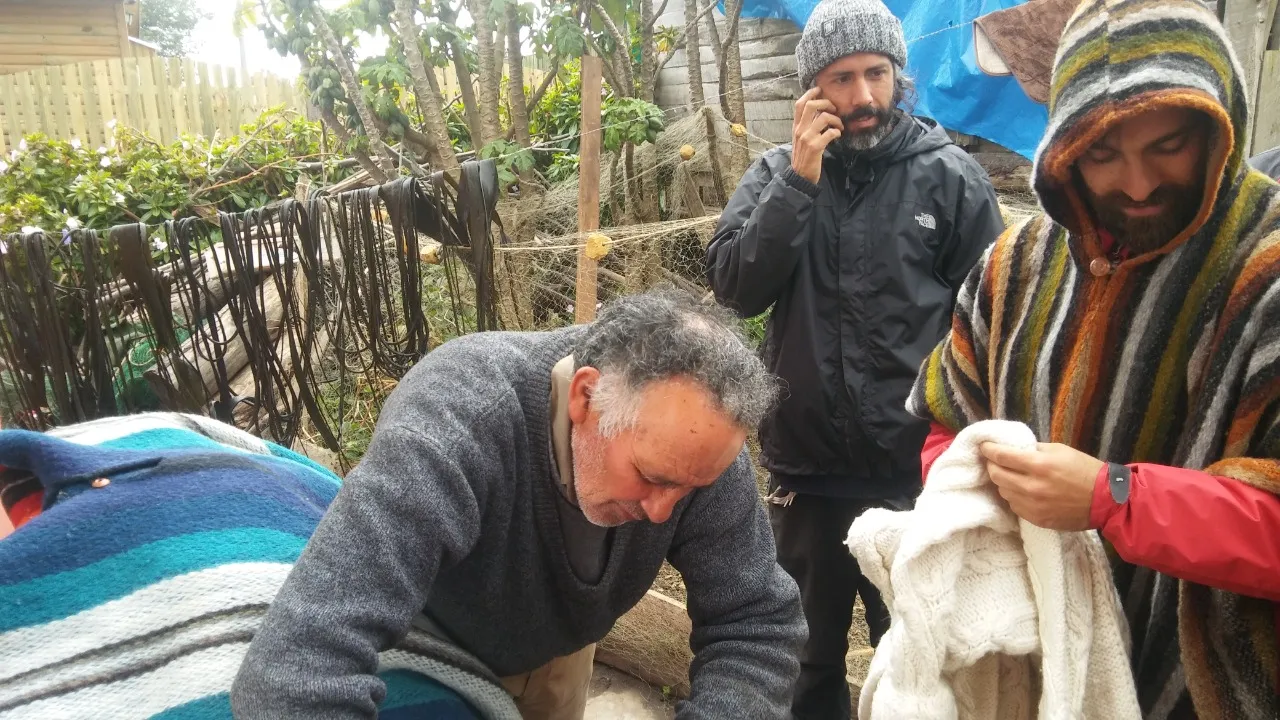
Learning from the others - Curanipe, Chile
Plants will be located in a way that includes allelopathy (positive and negative interactions between different kinds of plants. For example garlic and onion detents rodents, so it's worth planting them on the outside of your garden), strategic localization (plants that require more work closer to the households), but also esthetic and aroma values (plants which smell in a nice way near to the relaxing zones).
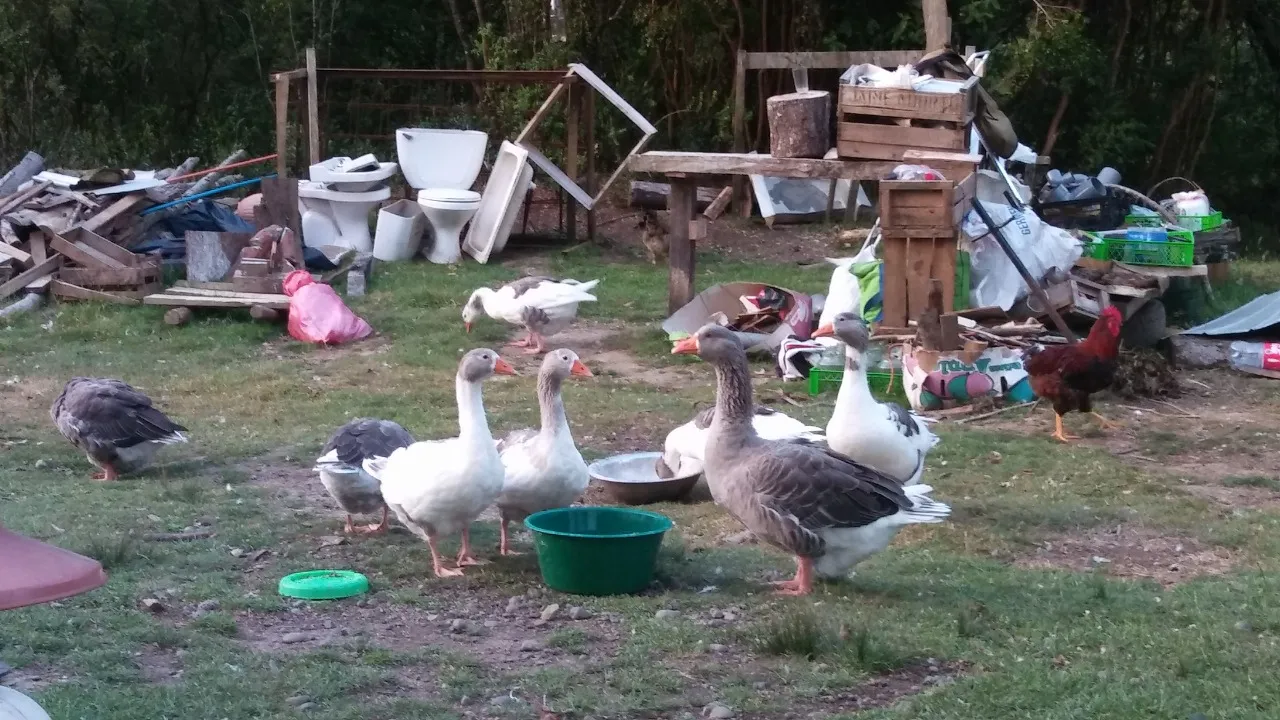
not every farm look esthetic
Creating the village is a project for many years.
Even if we will save enough money to buy the land, the next zones will be built one after another, year by year.
We predict that at the end of this path we will be able to produce 90% of the food for our own needs: not only fruits or vegetables but also butter, creams, ketchup or tomato concentrates. Additionally, we are planning to collect the wool and linen. That will allow us to make simple clothes.
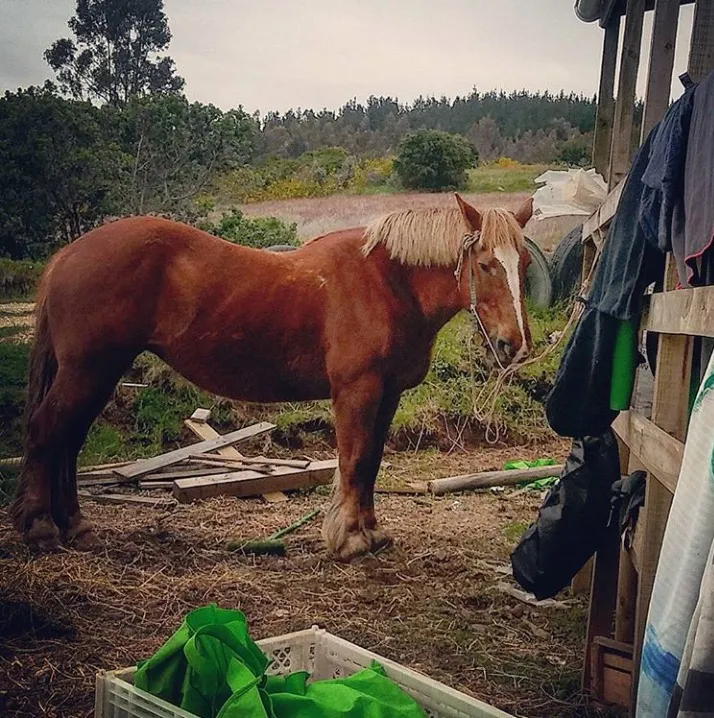
horse, as the main transport on the farm, Argentina
Even if total self-sufficiency is impossible to achieve with such a small community, we will be always trying to become as close to that idea as it's possible.
There will be two ways to earn the money from the community:
a) by selling fruits and vegetables, mostly in the capital city, Buenos Aires. The idea is to create a website that offers premium quality food for an extra price. It would be targeted by fine dining restaurants and customers who care about health. Service will include some of the products which are not available (or barely available) on the local market (like gooseberry or Jerusalem artichoke).
It will be possible to order the food with the delivery. Delivery will be made once per week and the availability of the products will depend on the season (Inspiration: Huertas a Deo, Curanipe, Chile, where we volunteered).
b) ecotourism. We plan to make 3-4 rooms for the tourists. Rooms won't be available all the time though. Sometimes it will be occupied by volunteers (WWOOF, work away, local volunteers, people in need)
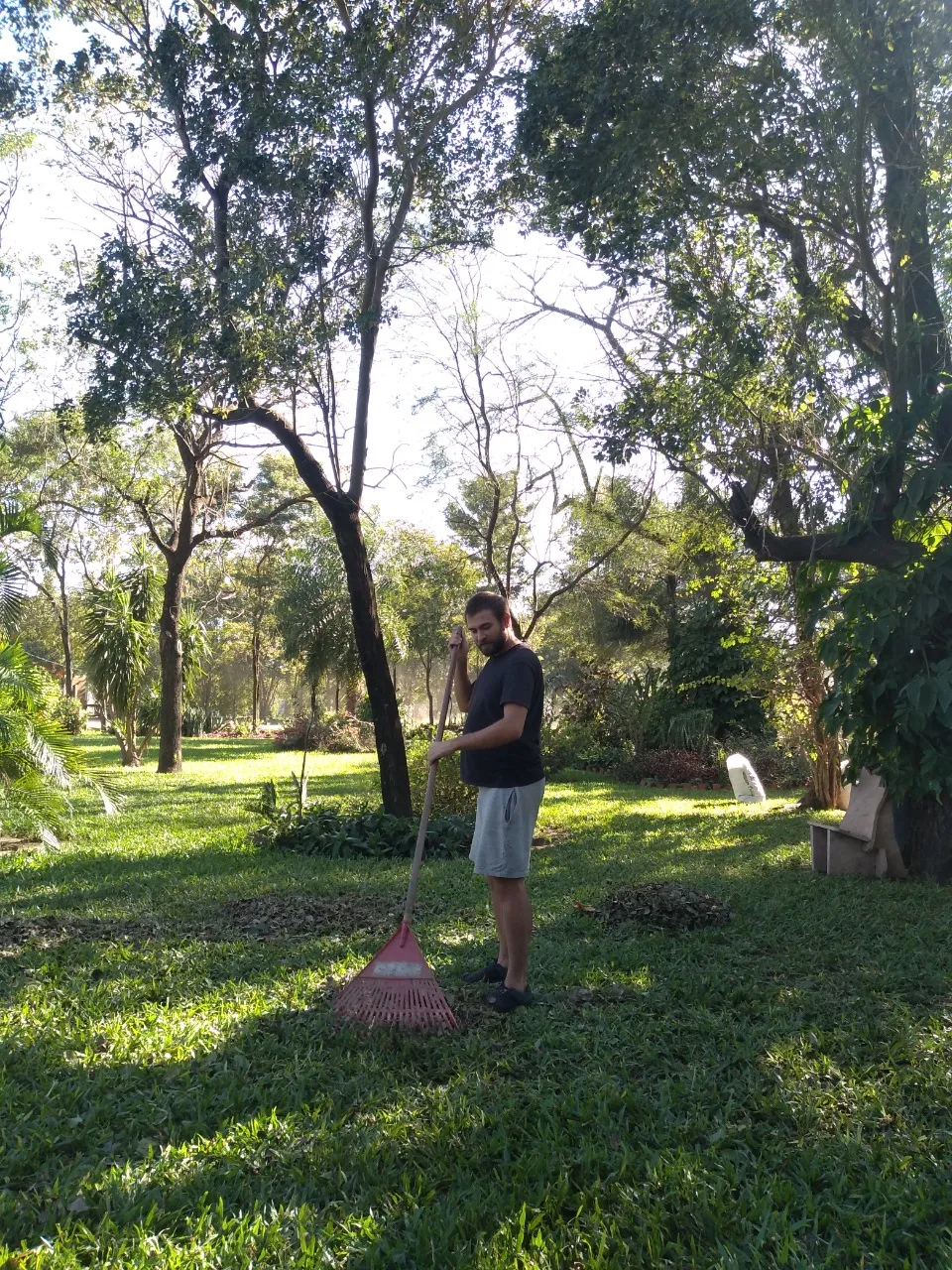
some basic works, Filadelfia, Paraguay
Even though the first few years might be difficult and require a lot of work, later keeping the garden will be much easier and will require only 3-4 hours of work daily. Thanks to that, everyone who lives in the village will be able to work online or in the near town.
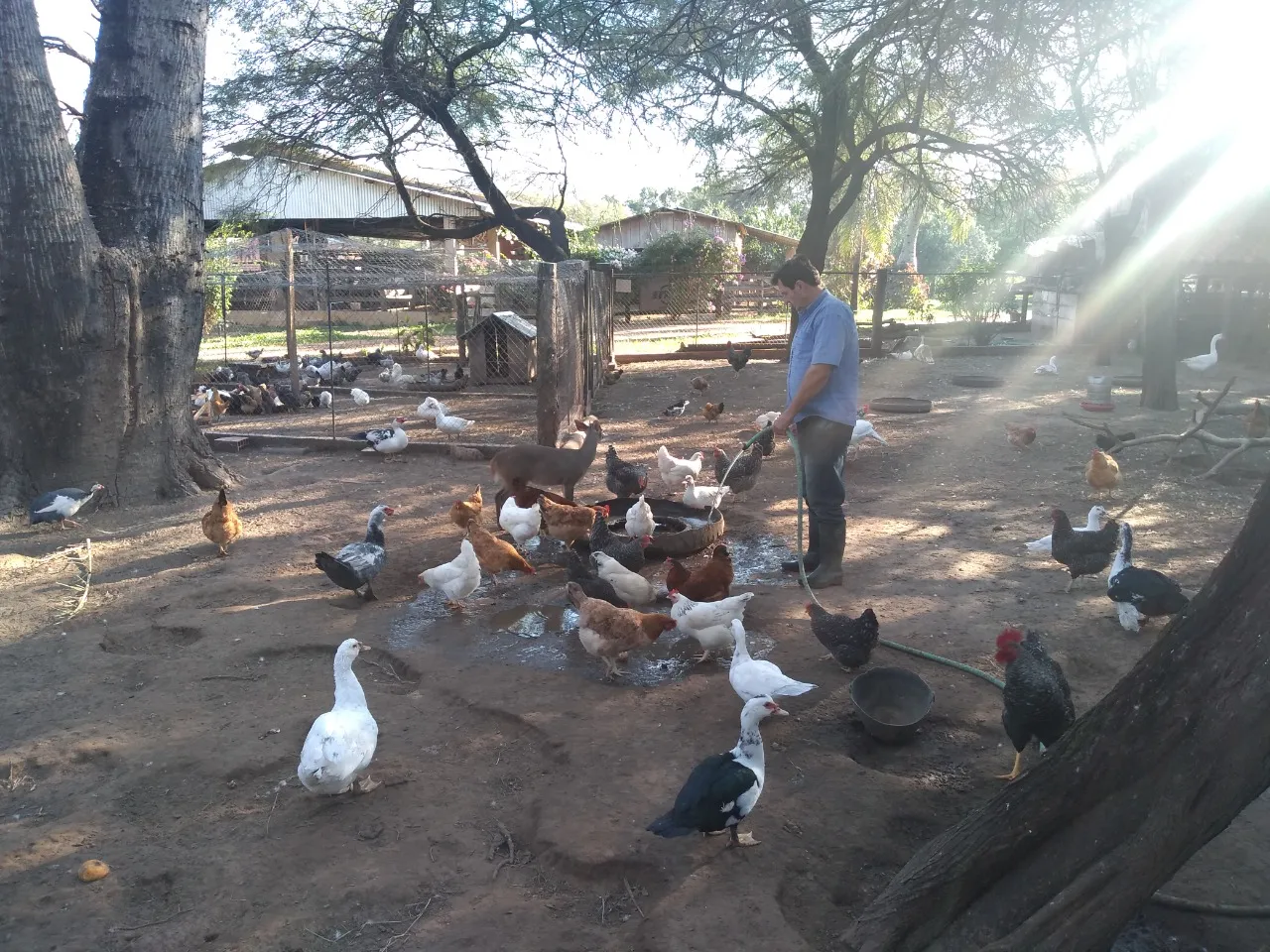
In Paraguay we learned more about the poultry, as the climate of Chaco doesn't allow to grow too many plants
The main idea is to create a community of people with similar values, high social sensitivity, people who care about nature and value it more than some other things which might be hardly available on the farm.
Each time someone leaves the community, another person may take the vacant space. We plan to organize a party once a year, to which all present and former volunteers, as well as residents and their families, will be invited.
We want Cumelen to become a safe space for those whom fate has treated unfairly. Refugees and new immigrants are given priority in volunteering, as they often need support until they find a suitable job.
Priority groups, in addition to refugees and immigrants, include people in a homeless crisis, people living below the poverty line, people experiencing domestic violence and discrimination (mainly transgender, non-heteronormative people, indigenous people, people of color, and all those who were not mentioned).
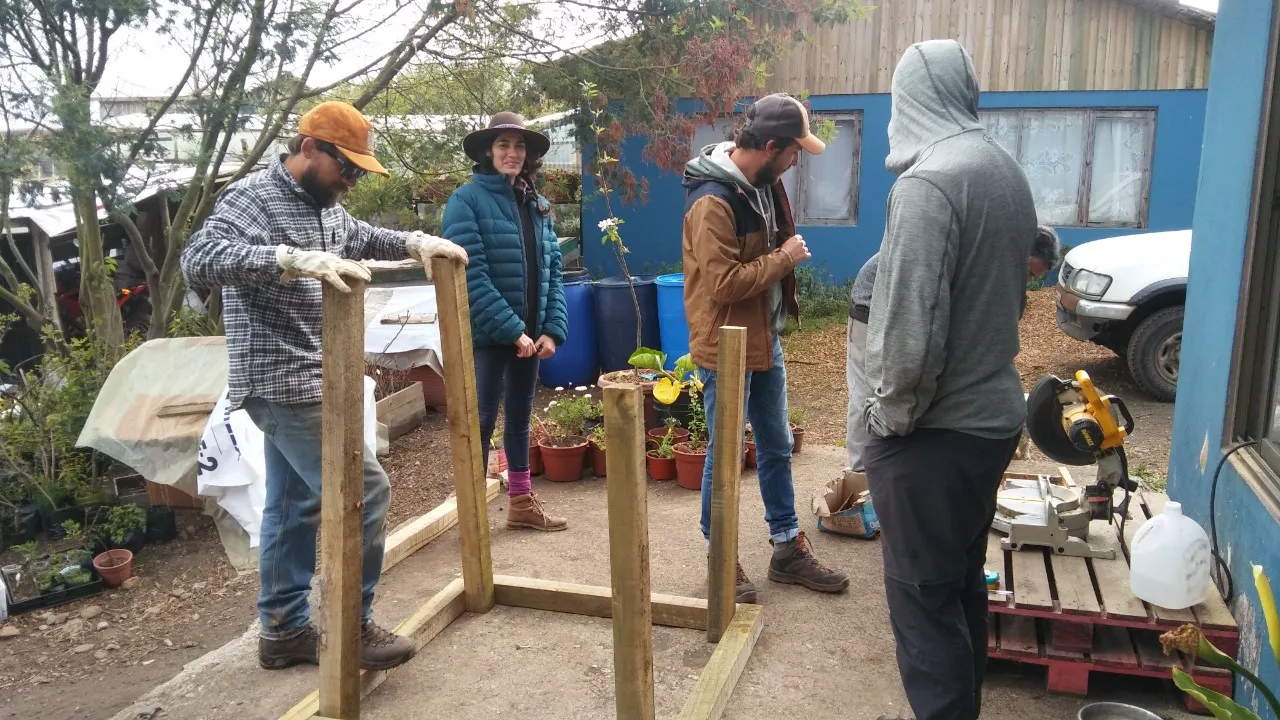
constructing chicken house - Curanipe, Chile
As the ecovillage, we want to stay in contact with local organizations to reach people in need. We wish also to create a network between local farmers (cooperative), share knowledge with everyone who is interested to learn something new, and prepare some projects to promote permaculture as the alternative to mono-cultivation. Education and participating in self-help initiatives will be non-profit.
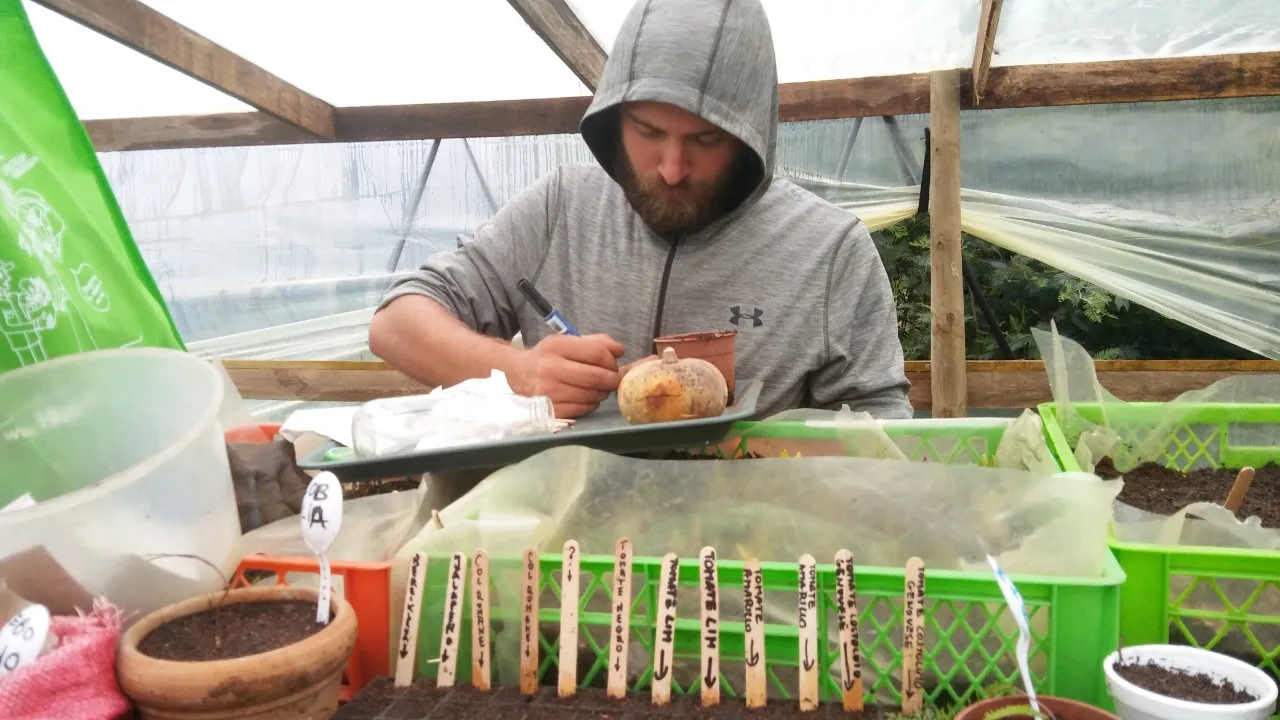
taking care of the seeds, Curanipe, Chile
I believe that information about permaculture should be available for everyone. Anyone who chooses to produce their own food is actually doing us a favor by taking care of our planet.
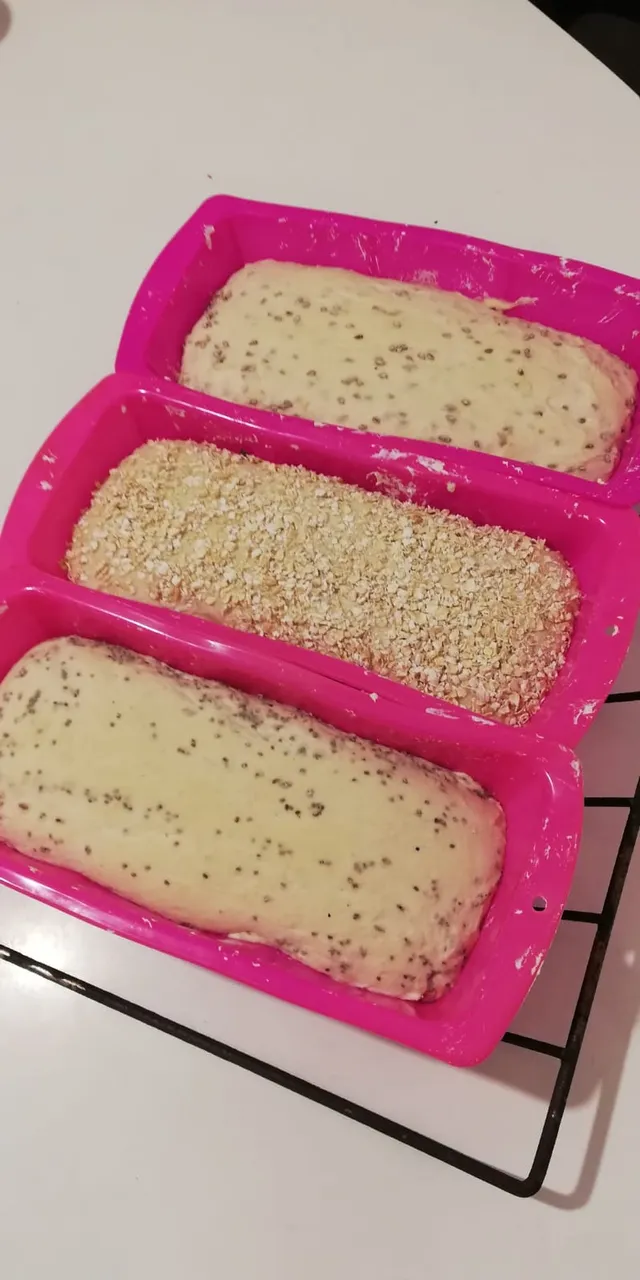
preparing own bread, Rosario, Argentina
The village will be zero-emission or as close as possible to zero-emission. It is difficult to find a person from the X, Y, or Z generation who would disagree with the statement that global warming is the greatest challenge for our and future generations. Producing your own food and relying on seasonal access to specific ingredients drastically reduce the carbon footprint. Nothing in the village will come from the other continents or even from other countries. In the further stadium of investments, electricity will come from wind and solar energy. Transport of the products for sale will produce some low pollution, so we are thinking to neutralize it with planting new trees and rehabilitating the surrounding areas (the area selected by us has been largely degraded by agriculture).

saving old types of plants. We were growing veggies from the seeds and after few weeks giving them for free to anyone who wanted to use them in their garden, Chile
For many people, the fact that we are going to raise animals in Cumelen may contradict the ecological character of the village. They may expect us to be vegetarian or even vegan. Such diets would, however, exclude nutritional self-sufficiency and force us to buy imported food, vitamin supplementation, etc. As far as I can imagine producing additional soybean and lentils and a balanced vegetarian diet in summer, in winter, would be highly risky. The animals on the farm also have other functions - they produce the necessary fertilizer, help pollinate plants, plow, provide wool and feathers, reducing the purchase of other things (pillows, socks, quilts, etc.).
We have only given up cows and pigs, which are the most responsible for global warming.
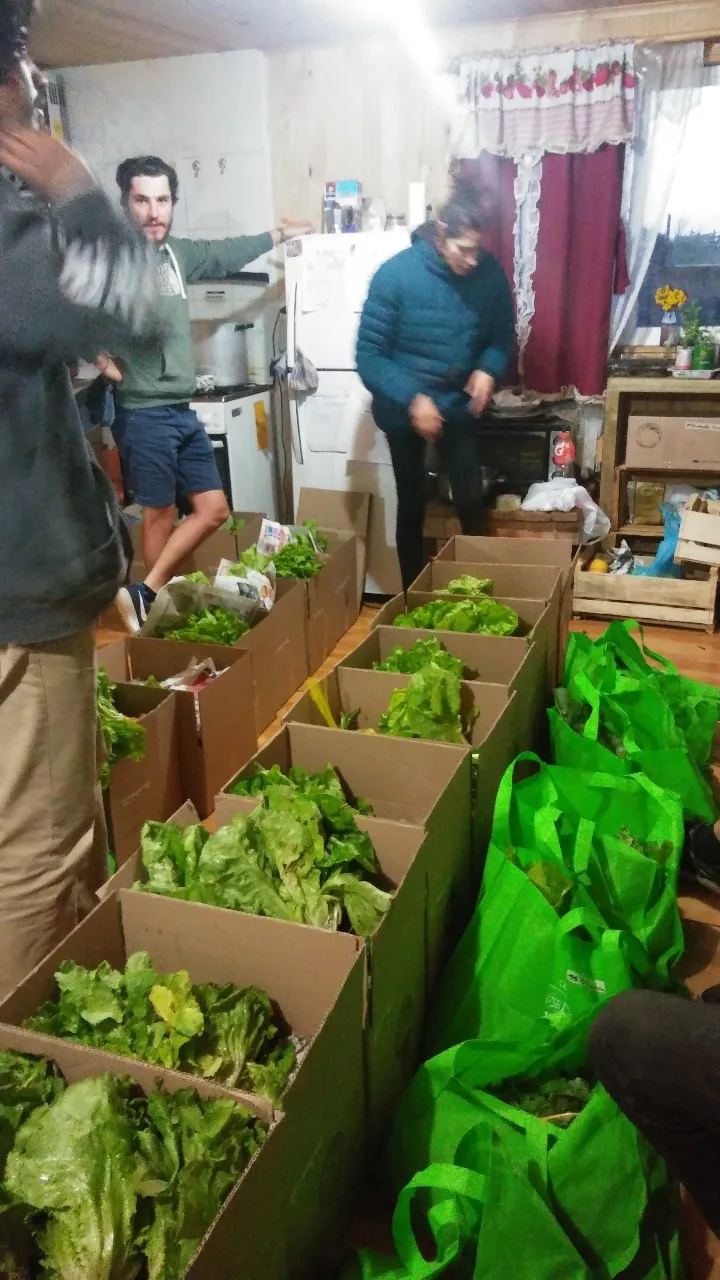
community Huertas a Deo which was helping to sell eco products from the small farms
The main charge against animal husbandry is the fact that most meat products and animal products (milk, eggs) come from large industrial farms where animals are operated in inhumane conditions. In our project, we try to change the attitude towards the animal from the objective to the subjective, minimizing the suffering of animals, reducing the intensification of exploitation (less honey taken from bees, etc.), and giving them better-living conditions.
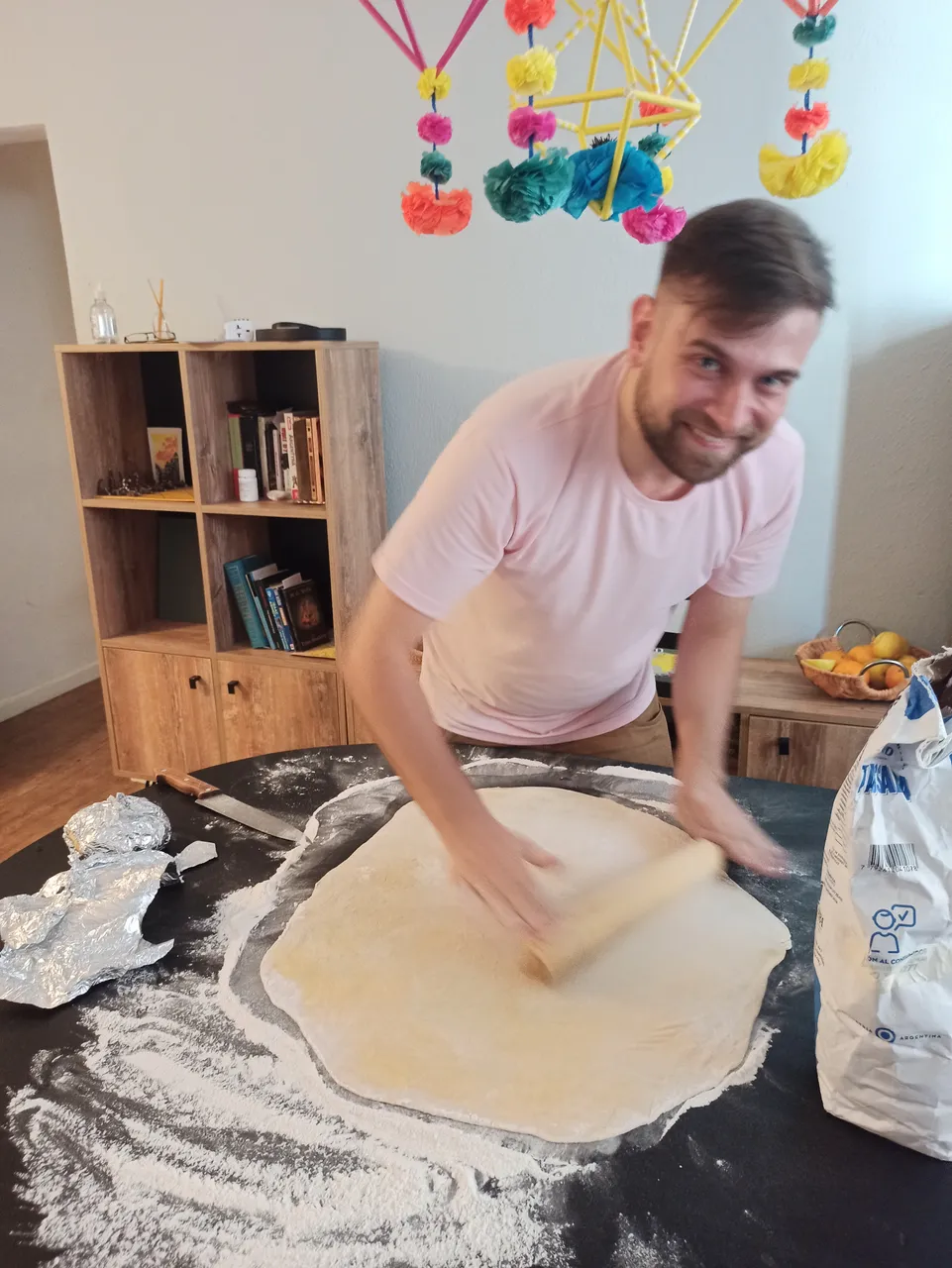
making own pasta, Argentina
We believe that we will manage to create an open, solidarity-sensitive community, able to help each other and others in difficult times, especially those who have been hurt by cultural, religious, social, or any other norms in which they did not want to or could not find each other. We are convinced that we can offer a real alternative to the consumption capitalist economy, which determines the level of fulfillment based on the level of annual wages, stored wealth, and achieved social position.
All the photos used in the article belongs to me.
@papi.mati
